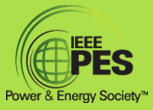| Power
Systems
Instrumentation and Measurement
Technologies: Programmable
Josephson Voltage Standards (PJVS) for power measurements,
Pulse-driven AC Josephson Voltage Standards (AC JVS) for voltage and
power measurements, GPS-Based System-Wide
Synchrophasor Measurements,
Smart
Metering, Home Area Networks, Demand
Response, Optical
Sensors
for AC high-voltage and high-current measurements, High-Accuracy
Rogowski Coils.
Descriptions
Programmable
Josephson Voltage Standards (PJVS), Pulse-driven AC Josephson Voltage
Standards (AC JVS): After
being used for quantum-accuracy AC voltage measurements, AC power
standards based on Programmable Josephson Voltage Standards (PJVS) are
currently under development at the National Measurement Institutes
(NMIs) in North America (NIST, NRC) and Europe (PTB, NPL, and other
European NMIs as part of iMERA project). This is a new path to
providing traceability to international system of units (SI) through
the realizations (called national standards) of units which are
primarily based on physical laws and fundamental constants. (The SI
units serve as the basis of traceability, which is a fundamental
concept for unified system of metrology.) It is expected that the
uncertainties of PJVS based power measurements of the order 1-2 μW/VA
or better are going to be achieved at power frequencies. Pulse-driven
AC Josephson Voltage Standards (AC JVS) may find application in
quantum-accuracy power measurements at higher frequencies, and for
distorted waveforms.
GPS-Based
System-Wide Synchrophasor Measurements:
The development of communications and introduction and availability of
a standardized time reference over wide geographic area by GPS, laid
the foundation for the synchrophasor technology. This in turn provided
information for system-wide monitoring, control and protection of the
power system that was not previously available. Although the
synchrophasor technology development can be traced to over two decades
ago, it had to wait fairly long for commercial deployment of Phasor
Measurement Units (PMUs), which has started on a larger scale
relatively recently. The synchrophasor technology is only now maturing
to large scale applications. Recent large scale deployment projects
emphasize the importance of standards for accuracy and
interoperability. Creation of large interconnected networks of PMUs
requires a thorough testing, as well as integration of monitoring and
control subsystems as embedded systems in the power networks. New uses
of PMUs are appearing, such as for real-time thermal monitoring of
multi-area transmission lines for sags (due to transmitted power,
ambient temperature, wind, ice, and other weather conditions). Beside
the calibration methods defined by the IEEE standard for
synchrophasors, new methods for dynamic calibrations of PMUs are
currently being developed by the National Institute of Standards and
Technology (NIST) in US, with a possibility that other National
Measurement Institutes (NMIs) will join the effort. An NMI's role is
also to ensure traceability of PMU measurements to SI units.
Smart
Metering:
Advances in the communication technology enabled and moves to
deregulation of electrical power industry prompted development of smart
metering for residential and industrial customers. Automatic Meter
Reading (AMR, interpreted also as Advanced Meter Reading) and Advanced
Metering Infrastructure (AMI) refer to automated collecting data from
electricity (but also gas and water) metering devices, transferring
data to a center for data storage, billing (possibly based on
time-of-use etc.), data analysis (e.g. load profiling), monitoring, and
other purposes. Two-way communication capability allows meter
configuration. Integrating distributed energy resources in the power
system requires two way metering capability from smart meters.
Communication capability allows for interaction with customer, which
requires customer behavior modification, introduces new dynamics in the
system, and opens up space for new services. This is represents a basis
for Home Area Networks and Demand Response. (E.g. see Smart Metering
Canada 2008, with more
than 1 million smart meters installed in Ontario at end of 2007.)
Demand
Response:
incentive-based:
load control, interruptible/curtailable rates, demand bidding/buyback
programs, emergency demand programs, capacity market programs (CMP),
ancillary-services market programs; time-based: time-of-use (TOU),
critical-peak pricing (CPP), real-time pricing (RTP).
Optical
Sensors:
Although the introduction of optical sensors for AC high-voltage and
high-current measurements (e.g. based on Pockel's and Faraday's
effects) started a long ago, system wide deployment has yet to take
place.
High-Accuracy
Rogowski Coils:
Used for a long time in various current sensing applications, such as
protective relaying, measurements of high-, impulse-, and
transient-currents, Rogowski coils with the new developments, including
innovative designs, new materials, machining techniques and two- or
three-dimensional printed circuit board structures, are emerging as an
increasingly accurate means for high-current measurements both at power
and higher frequencies. The introduction of the load reduction,
temperature compensation, linearization and other error reducing
techniques, device coding, parameter retention, digitization of output
signals, and communication to local data acquisition systems have
contributed to their performance in some cases satisfying and exceeding
IEC Class 0.1 requirements for Electronic Current Transformers.
|

